The following is an implementation with python-ffmpeg, pandas, matplotlib, and seaborn. You can find output video on my YouTube channel (link is unlisted).
Each frame with figures is saved directly to memory. New figures are generated only when the state of the population changes (person appears/moves/disappears).
You should definetely separate this code into smaller chunks if you are using this in a Python package:
from numpy.random import RandomState, SeedSequence
from numpy.random import MT19937
import matplotlib.pyplot as plt
import seaborn as sns
import pandas as pd
import numpy as np
import ffmpeg
RESOLUTION = (12.8, 7.2) # * 100 pixels
NUMBER_OF_FRAMES = 900
class VideoWriter:
# Courtesy of https://github.com/kylemcdonald/python-utils/blob/master/ffmpeg.py
def __init__(
self,
filename,
video_codec="libx265",
fps=15,
in_pix_fmt="rgb24",
out_pix_fmt="yuv420p",
input_args=None,
output_args=None,
):
self.filename = filename
self.process = None
self.input_args = {} if input_args is None else input_args
self.output_args = {} if output_args is None else output_args
self.input_args["r"] = self.input_args["framerate"] = fps
self.input_args["pix_fmt"] = in_pix_fmt
self.output_args["pix_fmt"] = out_pix_fmt
self.output_args["vcodec"] = video_codec
def add(self, frame):
if self.process is None:
height, width = frame.shape[:2]
self.process = (
ffmpeg.input(
"pipe:",
format="rawvideo",
s="{}x{}".format(width, height),
**self.input_args,
)
.filter("crop", "iw-mod(iw,2)", "ih-mod(ih,2)")
.output(self.filename, **self.output_args)
.global_args("-loglevel", "quiet")
.overwrite_output()
.run_async(pipe_stdin=True)
)
conv = frame.astype(np.uint8).tobytes()
self.process.stdin.write(conv)
def close(self):
if self.process is None:
return
self.process.stdin.close()
self.process.wait()
def figure_to_array(figure):
"""adapted from: https://stackoverflow.com/questions/21939658/"""
figure.canvas.draw()
buf = figure.canvas.tostring_rgb()
n_cols, n_rows = figure.canvas.get_width_height()
return np.frombuffer(buf, dtype=np.uint8).reshape(n_rows, n_cols, 3)
# Generate data for the figure
rs1 = RandomState(MT19937(SeedSequence(123456789)))
time_1 = np.round(rs1.rand(232) * NUMBER_OF_FRAMES).astype(np.int16)
time_2 = time_1 + np.round(rs1.rand(232) * (NUMBER_OF_FRAMES - time_1)).astype(np.int16)
time_3 = time_2 + np.round(rs1.rand(232) * (NUMBER_OF_FRAMES - time_2)).astype(np.int16)
loc_1_x, loc_1_y, loc_2_x, loc_2_y, loc_3_x, loc_3_y = np.round(rs1.rand(6, 232) * 100, 1)
df = pd.DataFrame({
"loc_1_time": time_1,
"loc_1_x": loc_1_x,
"loc_1_y": loc_1_y,
"loc_2_time": time_2,
"loc_2_x": loc_2_x,
"loc_2_y": loc_2_y,
"loc_3_time": time_3,
"loc_3_x": loc_3_x,
"loc_3_y": loc_3_y,
})
"""The stack answer starts here"""
# Add extra column for disappear time
df["disappear_time"] = df["loc_3_time"] + 3
all_times = df[["loc_1_time", "loc_2_time", "loc_3_time", "disappear_time"]]
change_times = np.unique(all_times)
# Prepare ticks for plotting the figure across frames
x_values = df[["loc_1_x", "loc_2_x", "loc_3_x"]].values.flatten()
x_ticks = np.array(np.linspace(x_values.min(), x_values.max(), 6), dtype=np.uint8)
y_values = df[["loc_1_y", "loc_2_y", "loc_3_y"]].values.flatten()
y_ticks = np.array(np.round(np.linspace(y_values.min(), y_values.max(), 6)), dtype=np.uint8)
sns.set_theme(style="whitegrid")
video_writer = VideoWriter("endermen.mp4")
if 0 not in change_times:
# Generate empty figure if no person arrive at t=0
fig, ax = plt.subplots(figsize=RESOLUTION)
ax.set_xticklabels(x_ticks)
ax.set_yticklabels(y_ticks)
ax.set_title("People movement. T=0")
video_writer.add(figure_to_array(fig))
loop_range = range(1, NUMBER_OF_FRAMES)
else:
loop_range = range(NUMBER_OF_FRAMES)
palette = sns.color_palette("tab10") # Returns three colors from the palette (we have three groups)
animation_data_df = pd.DataFrame(columns=["x", "y", "location", "index"])
for frame_idx in loop_range:
if frame_idx in change_times:
plt.close("all")
# Get person who appears/moves/disappears
indexes, loc_nums = np.where(all_times == frame_idx)
loc_nums += 1
for i, loc in zip(indexes, loc_nums):
if loc != 4:
x, y = df[[f"loc_{loc}_x", f"loc_{loc}_y"]].iloc[i]
if loc == 1: # location_1
animation_data_df = animation_data_df.append(
{"x": x, "y": y, "location": loc, "index": i},
ignore_index=True
)
else:
data_index = np.where(animation_data_df["index"] == i)[0][0]
if loc in (2, 3): # location_2 or 3
animation_data_df.loc[[data_index], :] = x, y, loc, i
elif loc == 4: # Disappear
animation_data_df.iloc[data_index] = np.nan
current_palette_size = np.sum(~np.isnan(np.unique(animation_data_df["location"])))
fig, ax = plt.subplots(figsize=RESOLUTION)
sns.scatterplot(
x="x", y="y", hue="location", data=animation_data_df, ax=ax, palette=palette[:current_palette_size]
)
ax.set_xticks(x_ticks)
ax.set_xticklabels(x_ticks)
ax.set_yticks(y_ticks)
ax.set_yticklabels(y_ticks)
ax.legend(loc="center left", bbox_to_anchor=(1, 0.5))
ax.set_title(f"People movement. T={frame_idx}")
video_writer.add(figure_to_array(fig))
video_writer.close()
Edit: There was a bug in which location_3 wasn't removed after 3 seconds. Fixed now.
